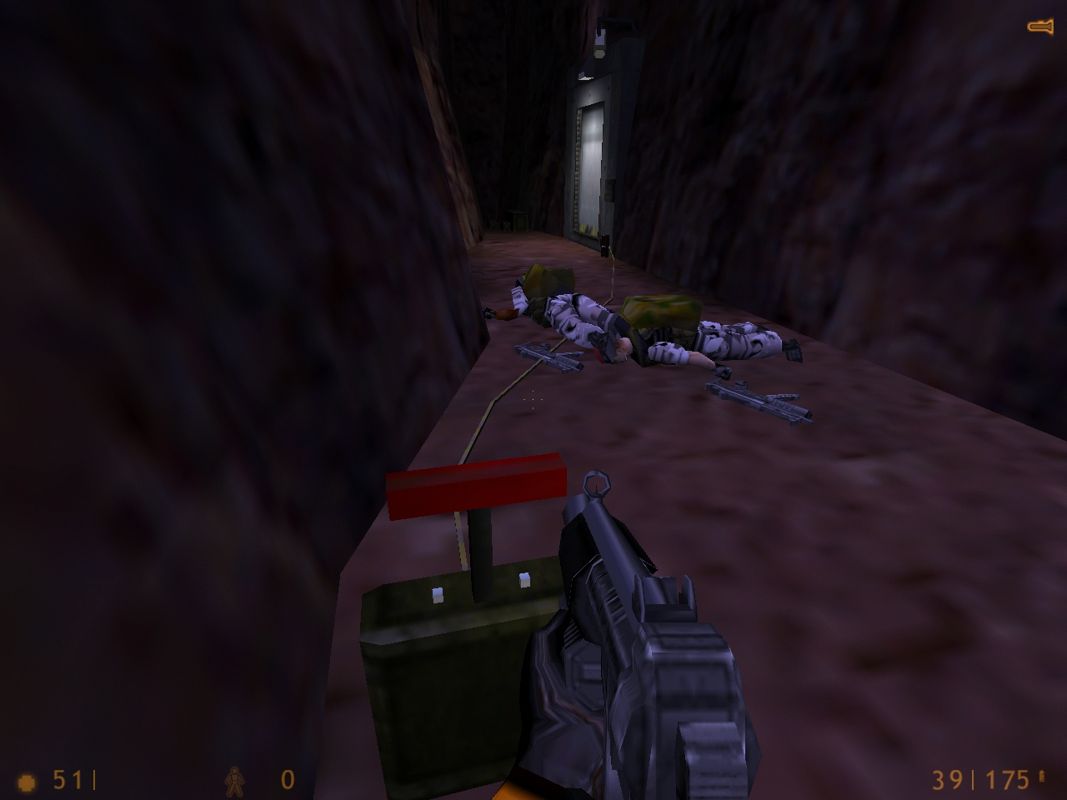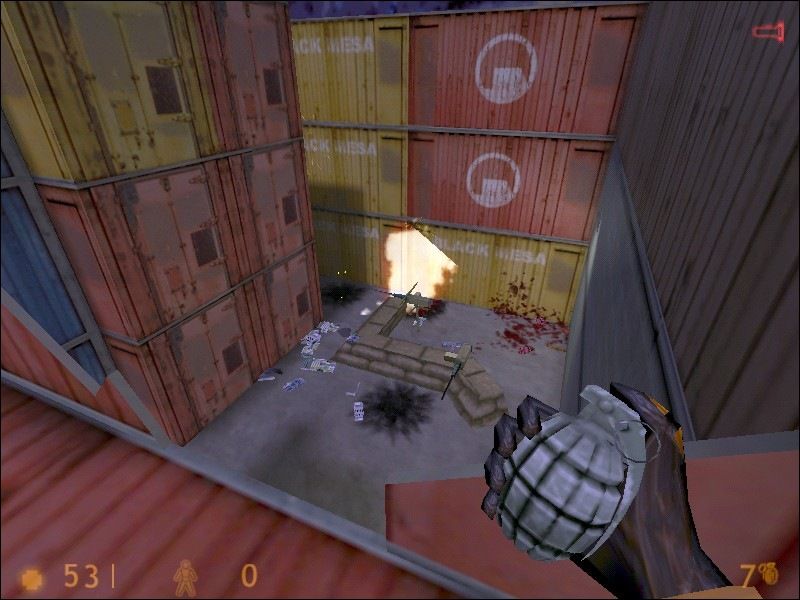Retro Replay Review
Gameplay
Half-Life: Uplink delivers a tightly focused slice of the Black Mesa experience, offering players a standalone diversion from the full retail game. From the moment you begin, you’ll find yourself navigating familiar corridors and testing an eclectic arsenal that includes the trusty crowbar, the rapid-fire MP5, and the adrenaline-pumping crossbow. While the level design is compact compared to the sprawling chapters of Half-Life, each room feels meticulously crafted to challenge your problem-solving instincts and reflexes.
(HEY YOU!! We hope you enjoy! We try not to run ads. So basically, this is a very expensive hobby running this site. Please consider joining us for updates, forums, and more. Network w/ us to make some cash or friends while retro gaming, and you can win some free retro games for posting. Okay, carry on 👍)
Uplink’s standout feature is the inclusion of the Hazard Course tutorial, which reintroduces players to the physics-based puzzles and movement mechanics that defined Valve’s original vision. Whether you’re a seasoned veteran brushing up on strafing and bunny-hopping techniques or a newcomer eager to master fundamental FPS skills, the course strikes a perfect balance between approachable guidance and escalating difficulty. Every jump, slide, and turret dodge feels weighty, rewarding careful timing and spatial awareness.
Beyond the tutorial lies the meat of Uplink’s custom scenario, loosely positioned around the “Communications Center” concept that was cut from the base game. Here, you’ll face many of the iconic Xen creatures and Black Mesa personnel gone rogue, all within a short but intense run. The pacing is brisk, packing in stealth segments, firefights, and environmental hazards without overstaying its welcome. This brevity actually enhances the intensity, ensuring that each firefight feels vital and every ammo pickup counts.
Graphics
Though Uplink is built on the GoldSrc engine from 1998, it still holds up surprisingly well. The textures and level geometry remain crisp, and the low-poly models convey character through clever silhouette work and animation cues. Valve’s attention to lighting techniques—spotlights cutting through steam vents, flickering overhead fluorescents—imbues the demo with an atmospheric tension that belies its age.
Uplink also features some audio assets that were originally cut from the retail Half-Life, which gives the environments a fresh sense of identity. Ambient drones, intercom chatter, and distant grunts blend together to keep you on edge. The sound design is especially effective in tight spaces where a single footstep can signal the approach of hostile forces, reinforcing that signature Half-Life immersion.
While hardcore fans might notice the absence of later graphical enhancements or high-resolution textures, Uplink’s aesthetic charm lies in its simplicity. The utilitarian lab corridors, rusted maintenance shafts, and containment chambers are rendered with enough detail to feel lived-in, and the occasional nod to the full game—such as posters or hazard markings—strengthens the sense of continuity with the main narrative.
Story
The storyline of Uplink is deliberately concise, offering a self-contained mission that slots into the timeline around the Lambda Core chapter. You assume the role of a rapidly deployed engineer tasked with reestablishing communications after the catastrophic resonance cascade. While the demo doesn’t delve into complex character interactions, it does weave in enough scripted events and NPC radio chatter to convey urgency and stakes.
One of Uplink’s narrative strengths is how it repurposes cut content—namely the Communications Center concept—into a coherent mini-plot. You’ll encounter locked doors requiring power reroutes, secret data terminals delivering cryptic logs, and emergency broadcasts hinting at the broader calamity unfolding around you. These elements coalesce into a tight mission arc that feels both fresh and faithful to Half-Life’s universe.
Importantly, Uplink avoids the feeling of being a mere tutorial by providing contextual goals and a semblance of storytelling payoff. The final moments, as you attempt to reestablish the uplink and witness a hail of alien interference, leave you with a palpable sense of accomplishment and an appetite for more. It’s an appetizer that whets your curiosity about events happening in parallel to Gordon Freeman’s journey.
Overall Experience
Half-Life: Uplink succeeds as both a promotional demo and a standalone adventure, offering roughly an hour of polished shooter action. Its tight pacing, purposeful level design, and homage to cut Half-Life content make it an enticing package for newcomers seeking a taste of Black Mesa’s chaos or veterans wanting a nostalgic detour. Best of all, it’s distributed freely alongside various editions of Half-Life and, as of the 25th Anniversary Update, integrated directly into Steam’s Half-Life base game.
In terms of replayability, Uplink holds up thanks to its Hazard Course component and the inherent satisfaction of mastering its combat encounters. Speedrunners and completionists will find reasons to revisit the demo, hunting for faster times or hidden ammo caches. Casual players, meanwhile, can appreciate a succinct, well-paced experience that doesn’t demand the dozens of hours typical of modern shooters.
For anyone contemplating a dive into the Half-Life franchise, Uplink is an accessible entry point that encapsulates the series’ core strengths: immersive environments, intelligent enemy AI, and a minimalist narrative that trusts players to piece together the story. Whether you’re evaluating a purchase of the full game or simply craving a quick shot of retro FPS goodness, Uplink stands as a compelling, free-standing gem in Valve’s storied catalog.
 Retro Replay Retro Replay gaming reviews, news, emulation, geek stuff and more!
Retro Replay Retro Replay gaming reviews, news, emulation, geek stuff and more!









Reviews
There are no reviews yet.